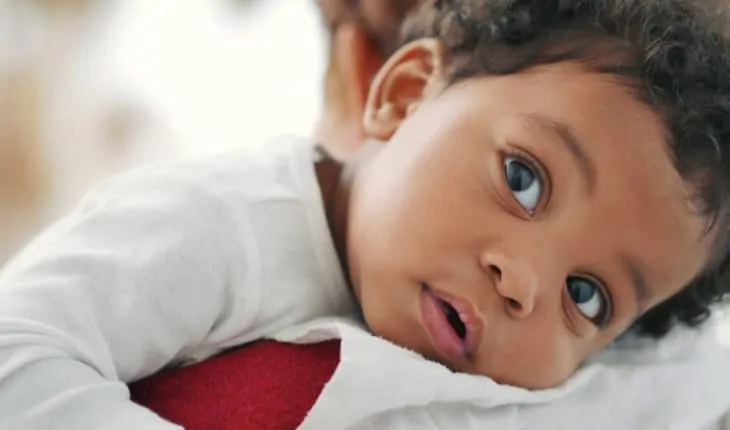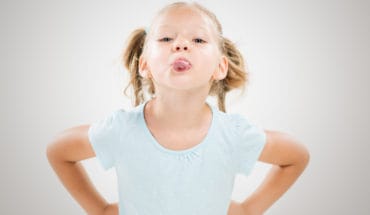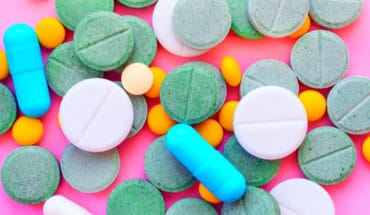Babies do not come with instructions. They are all different and bring unique challenges. Hormones and sleep deprivation combined with parental exhaustion and the responsibility of a tiny new baby can be totally overwhelming, particularly for first-time parents.
With a new baby comes an irrepressible need to protect them. You’ll be overwhelmed by scare stories, conflicting information, advice and endless lists of do’s and don’ts!
Fortunately, young babies are fairly well-designed and don’t get up to too many dangerous exploits, so the risk of accident is relatively low. Most young babies admitted to hospital have either respiratory infections or have had an accidental fall, usually whilst being carried to or from bed or from changing tables.
3 months:
- Babies may be able to roll over independently from front to back, or back to front
- Grabbing things
- Put things in their mouths
Don’t be tempted to leave them in bouncy chairs on raised surfaces.
The safest place to change their nappy is on the floor
Be extremely careful with nappy sacks – they are light and floaty and can easily suffocate a small baby
Do not leave your baby alone with pets or other children. Pets can react unpredictably with newborns and could also suffocate them. Other children can mimic caring for the baby and introduce them to choking hazards.
6 months:
- Many babies can sit up unsupported
- Push and pull things and roll to get to things
- Many babies begin to crawl or move in some other way independently
Never leave your baby alone in or near water – they can drown quickly and quietly in just a couple of cms of water.
Ensure their cot is away from windows and blind cords. Never hang bags etc of the side of cots, or tied cot bumpers, as they can pose strangulation hazards.
Keep dishwasher tablets, liquitabs and button batteries well out of reach as these will all burn them if they put them in their mouths.
Weaning:
Many parents are apprehensive about starting their baby on solids and rightly worried about choking. Babies do have a very sensitive gag reflex. Often, they have alarming facial expressions and can make frightening noises when they are just experimenting with new food textures. Gagging is a normal reflex, choking is not. Please click here to access our free choking course and learn how to help if your little one chokes.
Most common accidents:
- Falls from raised surfaces, baby bouncers, highchairs and downstairs.
- Suffocation from bed covers, pets, nappy sacks.
- Choking on food or small objects.
- Strangulation from ribbons, blind cords, drawstring bags hung over the cot.
- Poisoning from carbon monoxide, medication and cleaning products.
- Burns and scalds from hot drinks, bath water, liquitabs, button batteries and sunburn.
- Drowning – babies can drown in a couple of centimetres of water.
Safety advice for babies 0-6 months:
Never leave babies unattended on a raised surface or in the bath, not even for a second.
Tables are a long way up and floors are usually a hard landing. Nappies are best changed on the floor as there are so many cases of babies who have rolled off the changing table in the split second their parent has reached for something. Keep nappy sacks well out of reach.
- Never place bouncy chairs or car seats on a raised surface.
- Always strap your babies into highchairs and buggies.
- Ensure you hold onto the banister when carrying your baby downstairs.
- Fit safety gates to your stairs before your baby starts crawling.
- Do not use duvets and pillows with babies under 12 months.
- Babies should sleep on their back in the feet to foot position.
- Keep nappy sacks and small objects well away from babies – if they grab them they can easily suffocate as they don’t have the dexterity to remove them from their faces.
- Don’t leave toddlers and other young children alone with your baby.
- Never hang drawstring bags on cots, avoid cot bumpers which tie around the cot and use blind cord clips or alternatively choose a cordless blind.
- Fit a carbon monoxide alarm and have appliances regularly serviced.
- Don’t drink hot drinks whilst holding a baby, and never pass hot drinks over a baby’s head.
- Be careful of microwave hot spots when heating bottles and food – always shake or stir thoroughly and test the temperature before feeding the baby.
- Never place a cot by a radiator.
- Use strong factor baby sun cream in the summer.
- Keep babies in the shade, wear UV protective clothing and hats, and avoid midday sun.
Babies – crawling to walking
At this age, babies are mobile, inquisitive and keen to explore. This is when you need eyes in the back of your head, as they always seem to navigate towards inappropriate and potentially dangerous things.
It is not usually a medical emergency if someone has something in their nose or ear, but you do need a health professional to remove it safely.
Many babies don’t actually crawl, but find an alternative way of shuffling on their bottoms to get from A to B. Some walk or climb without ever bothering to crawl.
Characteristics of babies from 6 months to toddling:
- Large heads in proportion to their bodies – still head heavy
- A propensity to put everything in their mouths
- Unsteady, whether sitting or mobilising
- Eating solid food, chewing and biting with new teeth
- Pulling themselves up on things
- Opening and shutting things, trying to fill empty objects and posting things through gaps
- They don’t learn from experience
From around 12 months, babies learn that objects out of sight still exist and they may try and climb for things put out of their reach.
Some of the most common accidents for this age group are:
- Falls from stairs, windows, chairs, cots and highchairs.
- Suffocation from bedding, plastic bags and nappy sacks, packaging.
- Choking on food and other objects.
- Internal injuries from button batteries, cleaning products and dishwasher tablets being swallowed.
- Strangulation from clothing, ribbons and necklaces, blind cords, or something hung over their cot.
- Poisoning from tablets, cleaning products, plants and anything else they can get their hands on and put in their mouths.
- Burns and scalds from kettles, hot drinks, hair-styling equipment, radiators, bath water and the sun.
- Drowning in baths, paddling pools, swimming pools.
Babies can drown in as little as 2cm or so of water.
- Amputated fingers from hinges and slamming doors.
- Bumped heads as they stand up under things, walk into things and bump heads with other children.
- General bumps and bruises, cuts and grazes as they fall over whilst exploring.
Safety tips for this age group:
- Fit stair gates and keep stairs clear from clutter.
- Teach your baby to come down the stairs backwards.
- Always hold the stair rail when going up or downstairs.
- Never leave chairs next to a window, work surface or somewhere dangerous that your baby can climb to.
- Strap them into the buggy and highchair.
- Nappy changing is always safest on the floor.
- Keep plastic bags and packaging out of reach and dispose of them carefully.
- Always stay with your child when they are eating or drinking.
- Discourage older children from sharing their food with the baby.
- Keep small items and all batteries well out of children’s sight and reach.
- Never put necklaces or dummies round a baby’s neck.
- Do not hang drawstring bags over the cot, tie blind cords out of reach.
Strangulation from children climbing and slipping with their head through a string or cord is not uncommon in this age group.
- Medicines should be locked away; a childproof container may only delay them getting at them!
- Be careful with bags or handbags left on the floor, they may have numerous potentially lethal hazards inside.
- Lock away household detergents, buy dishwasher capsules rather than powder as they are less likely to be swallowed and choose cleaning products containing Bitrex which is bitter enough to discourage children from swallowing it.
- Keep hot drinks out of reach, use a kettle with a short flex and keep it at the back of the work surface.
- Use the back rings of the cooker, turn pan handles away from the edge.
- Always stir food and drink to avoid microwave hot spots.
- Fit a thermostatic valve to the bath to avoid temperature surges, run the cold tap first and use a bath thermometer.
- Fit fireguards and radiator guards, turn off heated towel rails.
- Be particularly careful of irons, hair straighteners and other hot implements and keep them and their flexes well out of reach when cooling.
- Never leave a baby or child alone in the bath, even for a second.
- Supervise water play at all times and always empty paddling pools and bowls of water immediately after use.
- Be very careful with ponds and swimming pools.
- Use soft corner covers for hard and sharp corners.
- Use door stops to prevent doors slamming.
- Secure furniture to the wall with furniture straps to prevent it toppling if a child tries to climb on it.
- Baby walkers have been the cause of numerous accidents and are not recommended.
- Always adhere to the recommended age ranges on children’s toys.
- What is a seizure? - 13th March 2025
- Febrile Convulsions and Seizures in Children - 13th March 2025
- Why women are less likely to receive CPR or survive cardiac arrest - 6th March 2025






